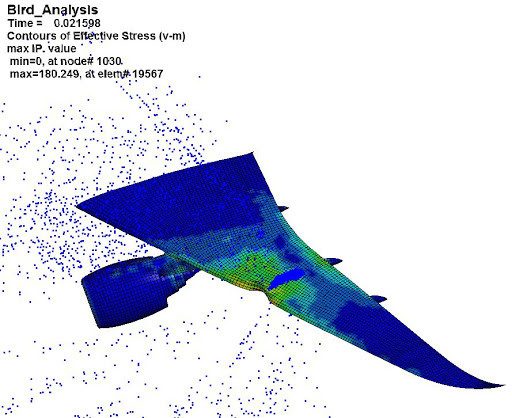Aerospace

Aerospace industry has sought to use more and more composites instead of metal to create more light-weight and fuel-efficient aircraft. As aluminum replaced wood many decades ago, advanced composites have replaced aluminum as the structural material of choice in aircraft design. Companies have adapted non-conventional manufacturing techniques and re-organized assembly planning processes to streamline production facilities.
Aviation firms continuously requires innovation blended with highest order of complexity. The development & manufacturing of a flight vehicle demands careful balance & compromise between abilities, design, available technology & costs.
Advance simulation techniques have the potential to speed-up the design and validation process up to large extent.

Bird Impact on airplace wing
Bird strikes are a significant threat to flight safety, & have caused a number of accidents with human casualties. A bird strike event on aircraft wing structure is successfully simulated using LS-DYNA with its strong damage & failure modelling capabilities.
Pressure analysis on Airplane wing
In static pressure analysis under side of the wing, uniform pressure is applied. Wing is constrained at the fuselage side. Aluminum material is used for modelling the airplane wing
Structrual Strength
Structural requirements of flying machines are always driven by the application. No structure should fail under any circumstances, to ensure safe takeoffs and landings. Most of the time, structural components are exposed to dynamic loading conditions which are complex in nature and need deep understanding of physics along with environmental effects. This includes design of wing box structure, fuselage, pylons, nose and tail structures, landing gears and rotating assemblies
